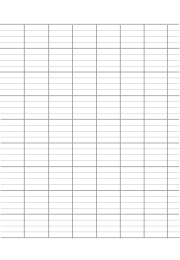
Save This Configuration
Regenerate instantly whenever you need more sheets

Seyès ruling, also known as French ruling or French grid paper, is a specialized lined paper format commonly used in France for handwriting practice and calligraphy. Its distinctive grid structure with horizontal and vertical lines helps writers maintain consistent letter sizing and spacing, making it ideal for students and professionals alike.
Unlike standard lined paper, Seyès paper features a precise grid designed to improve handwriting. The structure consists of:
This layout is particularly helpful for mastering French cursive writing and improving overall penmanship.